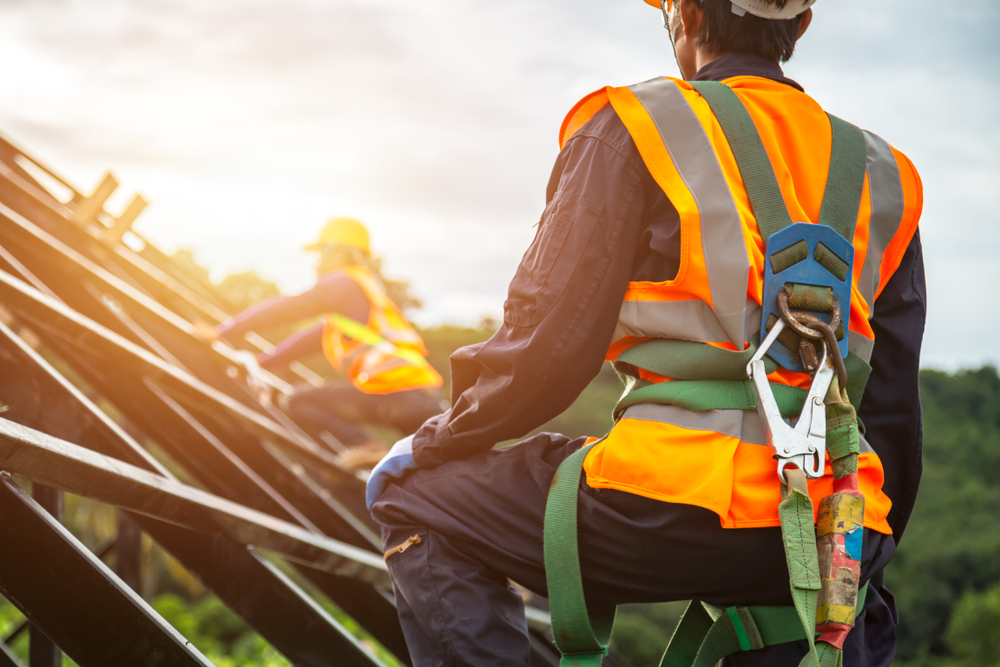How to choose the right safety harness?

When working at heights, you must follow many rules resulting from occupational health and safety regulations. They also apply to equipping employees with personal protective equipment, including harnesses. How to choose the right model for the type of work performed?
Safety harnesses and applicable standards
Occupational health and safety harnesses are used during all work that takes place at a height of 1 m above the ground or floor. They are used by employees of construction, renovation and tree cutting companies, as well as those specializing in washing windows and gutters.
Safety harnesses should comply with the following standards:
- PN-EN 363,
- PN-EN 361,
- EN 358.
These standards indicate how to properly install harnesses, as well as their form and the functioning of individual elements of security systems, such as anchor points and connectors. The use of products that do not comply with the standards mentioned may pose a serious threat to the user's life and health.
All harnesses are accompanied by a card that informs about the frequency of necessary inspections and special requirements regarding their use.
Safety harness size
In order for occupational health and safety harnesses to adequately protect a given person, they must be properly selected for their body structure. You can find products in various sizes on the market, usually from M to XXL. The employer should adjust the harness individually to the employee's dimensions to prevent accidental slipping out of the harness or pressure.
Suspenders are usually equipped with straps that can be self-adjusted to suit your body shape. This allows you to avoid situations in which individual elements of the harness restrict movement while working.
Occupational health and safety harnesses and the type of work performed
Occupational health and safety harnesses must also be selected for the type of work. In the case of short-term and ongoing activities, standard models are rarely sufficient. However, if a person regularly works at heights, it is worth equipping them with harnesses with elements supporting the thighs, back and hips. Thanks to this, you can maintain greater comfort of using the harness, which translates into the employee's efficiency.
The design of the harness is also important. In situations where there is an increased risk of falling while performing work, it is best to use dorsal models. However, most tasks at height use a single- or two-point harness.
Safety harness for work with both hands
During some tasks, the employee should be able to use both hands at the same time. It is then necessary to equip it with a positioning harness with dorsal or dorsal-sternal attachment. Such a harness should also have two attachment points at waist level, to which a rope can be attached to position the employee's figure.
Safety harness for vertical work
When working vertically, a safety harness with a front attachment buckle is used. It is placed in the chest area. For such activities, it is worth choosing harnesses that also have a hip belt to stabilize the employee's position. This harness will work well when working with suspension and support.
Safety harness for difficult conditions

You can also find on the market harness for working at height adapted for use in places with elevated temperatures or increased risk of explosion. Some models are also resistant to aggressive chemicals. In industrial plants where such factors occur, it is necessary to use occupational health and safety harnesses adapted for use in difficult conditions.
Harnesses that don't fit properly – consequences
Harnesses for working at height must be adapted to the characteristics of the tasks performed and the user's body structure. Otherwise, they may not support the employee, putting him at risk of falling. The employer is obliged to equip people working at heights with certified harnesses in accordance with the above-mentioned standards. Otherwise, he may face huge financial penalties, especially if irregularities are detected during inspections. If an accident occurs due to the use of inappropriate occupational health and safety harnesses, the employer may face serious problems.
Inspection of the technical condition of height harnesses
It is also worth knowing that the technical condition of safety harnesses must be checked regularly. If any element is damaged, it should be immediately replaced or a new product purchased. Periodic inspections of occupational health and safety harnesses are carried out by authorized companies at least once every 12 months.
Are you looking for a certified safety harness for working at heights? Check out our assortment!
